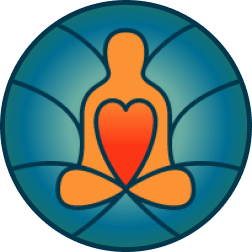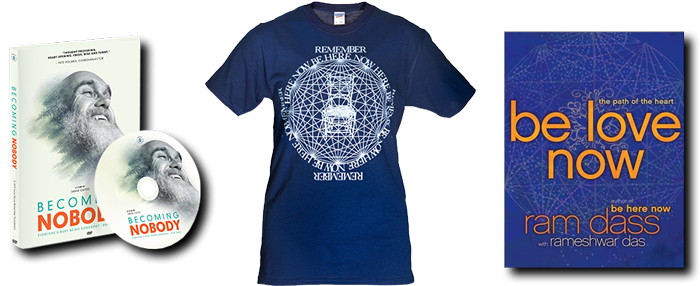As Richard Alpert – the student – I was attracted to psychology. I wanted a way to understand how my mind worked and explore my human identity. The state of the psychological art was primitive when I was in college. On an internship at the Boston Psychopathic Institute, I witnessed a lobotomy procedure. That alienated me from the medical side of psychology.
I got involved in the academic world, studying social psychology, Freud, child development, and achievement motivation, and I started learning to do clinical therapy. After getting an undergraduate degree at Tufts, I got an MA at Wesleyan and a PhD at Stanford. From Stanford I was hired by a mentor, David McClelland, to teach at Harvard. I had been unable to gain entry as an undergraduate but I enjoyed teaching.
A new faculty member, Timothy Leary, joined the Center for Personality Research at Harvard where I worked. In Mexico for the summer, he ingested psychedelic mushrooms on the recommendation of a friend. Afterward he said he learned more about psychology in those few hours than from all his academic studies. I was inspired to try them too, although it took six months before the opportunity presented itself.
The first time I took psilocybin was at Tim’s home in Newton, Massachusetts, with Tim and Allen Ginsberg during a blizzard. I have described that session many times. Suffice it to say I went through the many roles I had identified with, and came into what I now call my soul. Even my body vanished. I became pure spirit, pure consciousness and love. It changed my life, it completely altered my point of view.
I kept saying, “I’m home, I’m home, I’m home.”
In the academic arena, Timothy had started the Harvard Psilocybin Project. Previous research into uses of psilocybin and LSD had centered on their psychotomimetic qualities—their ability to induce psychosis-like symptoms on stressed subjects. We focused instead on the consciousness expanding aspects of these substances, using them to investigate the sense of identity, subject-object relationships, and qualities of mystical experience they engendered. We wanted to explore their therapeutic, esthetic, and religious implications. We brought in musicians, poets, and philosophers and developed supportive “set and setting” conditions for the experiments.
Our investigations soon drew media attention (e.g., a Newsweek cover, “God in a Pill?”), and the Harvard administration sought to dissociate the university from the drug notoriety. In 1963, I became the first tenured professor to be fired from Harvard in the 20th century. (I was in good company. Ralph Waldo Emerson was also dismissed from Harvard in the previous century.)
At the same time, a convergence of psychedelic drugs and rock music coupled with political upheaval and sexual liberation was burgeoning on the west coast. The hippie movement in the Haight-Ashbury district in San Francisco eclipsed our relatively staid research. Tim and I, especially Tim, already Establishment outcasts, rode the counterculture wave. Any semblance of guidance or control had already spun far beyond us with the Summer of Love, Ken Kesey’s Acid Tests, and the psychedelic rock music sweeping through the youth culture. Federal and state authorities reacted with restrictive laws and suppression of any remaining research efforts.
Aside from the media hoopla, from several hundred psychedelic sessions it was becoming clear to me that for all our idealistic aspirations we did not know enough about using these plant substances and chemicals.
The highs and lows of psychedelic sessions had not led to stable expression in our lives. Although we had experienced profound insights and ecstatic states, we had not been able to translate them into enduring enlightenment.
We did not really know how to integrate these illuminations into life. We needed a map and practices. I was not getting any new information from the sessions. As Alan Watts famously said, “When you get the message, hang up the phone.”
I went to India in 1967 to see if anyone there had the map for this journey. Intimations that the East held such wisdom had come from texts like the Tibetan Book of the Dead, which Aldous Huxley had passed along, and that we used as a template for The Psychedelic Experience.
Through seemingly fortuitous circumstance I met a guru, an old man wrapped in a blanket, in the foothills of the Himalayas. I have charted those events elsewhere, and will not repeat them here. On two occasions my guru ingested very large doses of LSD that I gave him with no discernible effect.
He said these substances were used by Himalayan yogis in the past, but the knowledge has been lost. He said LSD can take you into the room with Christ, but you can only stay for two hours. And while drugs can be useful, love is the best medicine.
When asked how to raise kundalini, the primal spiritual energy deep within each of us, he replied, “Feed people.” His simple teaching was, “Love everyone. Serve everyone. Remember God.” He himself radiated love from the core of his being. The path of love he pointed to in Hinduism is referred to as Bhakti, the path of devotion, of merging into Oneness through love. It is known as the easy path.
At a small temple in the Himalayan Hills I sat meditating before a large orange statue of Hanuman, the Hindu monkey god. Hanuman is a figure from the epic allegory, the Rāmayana. He embodies selfless service and devotion to God. I wondered what my Harvard colleagues would think of me paying homage to a cement monkey?
My guru, Neem Karoli Baba, or as we called him, Maharaj-ji, gave me the taste of unconditional love. Maharaj-ji gave me the name, Ram Dass, servant of Rām, which is also Hanuman. I am deeply grateful to everyone and everything that got me here, including psychedelics. I try to be like Hanuman and become those qualities of love and service.
-Ram Dass
Originally published in the Journal of Humanistic Psychology (August, 2017)
Photo by Lisa Law








Sure do enjoy listening to RAM DASS. Had the pleasure of seeing him in Denver several years ago. Thank you to all the people who have made his talks available!
❤️